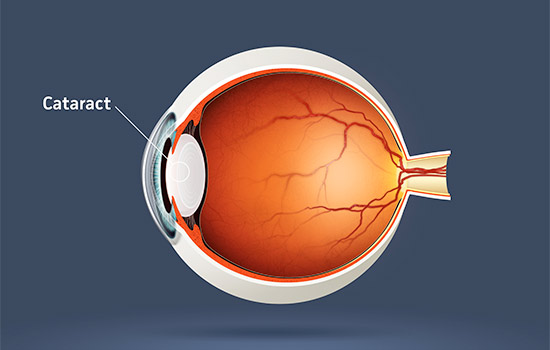The lens of the eye is normally transparent. If a cloudy area develops in the lens, it is called a cataract. The function of the lens is to focus the image correctly onto the nerve layer which in turn is transmitted to the brain. The lens is contained within a clear membrane called the lens capsule. The lens capsule separates the lens from the iris and the transparent, thick fluid called the vitreous body.
The cataract will scatter the light passing into the eye and images are not focused properly on the retina at the back of the eye. The result is that vision becomes increasingly poor. This unfocused effect will get worse as the cataract continues to develop.
Cataract formation affects only the lens of the eye and not any of the other important structures, such as the cornea, iris, retina or optic nerve.
A cataract will often worsen to the point where surgery is needed to remove the cloudy lens and replace it with a permanent artificial lens. There are no drops or medication that can be used to prevent cataract from forming and thus if the lens develops cataract which prevents glasses from correcting the focus, then the only effective treatment is surgery.

